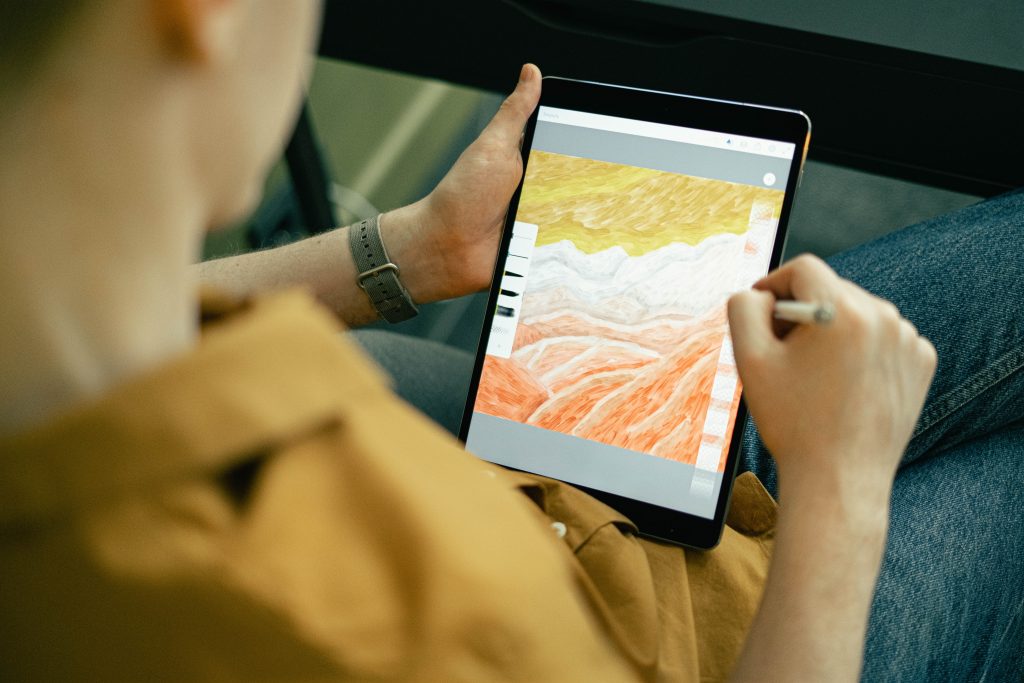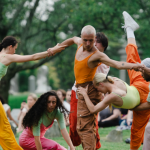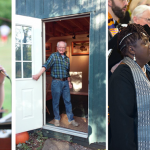NFTs 101: What You Need to Know Now
We help you understand and navigate the world of NFTs, suggesting actionable steps for artists to participate in the new technology landscape.
The intangible nature of a digital artwork has long been a challenge for creatives working in interdisciplinary spaces. How does one offer something unique to a collector when the internet is abundant and scalable, and any image can be saved, replicated, and shared? The concept of digital scarcity that NFTs are based on is what allows creatives to bring their work into the crypto space and create new value.
And while NFTs have undeniably expanded the landscape for creatives worldwide—often providing additional income and exposure—many artists have been concerned about the environmental impact and lack of accessibility, inclusion, and diversity in the new emerging “decentralized internet” (Web3) industry.
For these reasons, artist & technologist Laura Ó Reilly partnered with NYFA to offer the workshop and award program Demystifying NFTs. The program is designed for beginners in the crypto space and anyone curious about minting NFTs and understanding the potential of blockchain technology. Through these workshops, Ó Reilly hopes to shift the mainstream NFT narrative by recognizing the potential ways blockchain technology can be utilized to create an equitable, thriving interdisciplinary art economy, one that intentionally mirrors the diversity and nutrient exchange frameworks found in forest ecosystems.
Demystifying NFTs is presented free of charge to artists, creatives, cultural workers, and non-profit professionals through the generous support of Rockefeller Brothers Fund through December 31, 2022: more info and sign up here.
Below, we’re sharing five tips from Ó Reilly below for anyone interested in creating NFTs:
1. Exhale
You are not behind and you didn’t miss out on anything. NFTs have been controversial due to the environmental impact of the older versions of the consensus technology–which has since been updated to consume 99% less energy across the vast majority of NFT platforms globally.
2. Slowly Learn the Basics
The industry jargon can make NFTs feel inaccessible and it’s important to learn the basics to feel more comfortable exploring the space. Here are a few key concepts to understand, these are all explained in depth in the workshop series:
- NFT: A Non-Fungible Token (NFT) is a digital asset that is non-interchangeable with a distinct value and proof of ownership. Fungibility, or interchangeability, is the basis of currency; for example, you can easily exchange one dollar bill for another. NFTs are non-fungible, which means they are unique and distinct digital assets.
- Blockchain: A blockchain is a digital ledger that is backed up by software across many different computers around the world – in theory, anyone with a computer (that meets the blockchain requirements to validate transactions i.e. staking a minimum amount of crypto) can become a node on the network. All blockchain processes, including data storage, transaction verifications, and more, are spread across many different computers making it decentralized and less prone to cyber attacks.
- Digital (Crypto) Wallet: Crypto wallets allow you to access the cryptocurrency and NFTs you own. A crypto wallet doesn’t actually hold cryptocurrency/NFTs; rather, it is like a calculator that tells you how much you have or what NFTs you own. The currencies/NFTs are stored on the blockchain.
- Smart contracts: A smart contract is a program stored on a blockchain that is used to automate the execution of an agreement. The terms of the deal are written directly into the lines of code so the contract is created automatically upon an agreement by all parties – no central authority or legal system necessary. (I.E. royalties are automatically paid out to artists). The name can be misleading, though, as it’s not an in-depth contract; what makes it “smart” is that it’s coded and automatic. Artists should still make sure they are protected with an actual legal contract to supplement the “smart contract.”
- DAO (Decentralized Autonomous Organizations): DAO is an emerging form of legal structure with no central governing body. Every member typically shares a common goal, and decisions are made by voting to ensure that everyone in the organization has a voice. DAOs are becoming popular to administer grants, support artist collectives and integrate into foundations/non-profit structures. Smart contracts are the backbone of a DAO.
- Web3: Web3 is being built in real-time, and is the next proposed version of the web. Focused on decentralization and user owned data, it utilizes blockchain technology and open-source apps. What can get confusing is that Web3 is not the metaverse, but some people’s ideas for the metaverse could be built using Web3 technologies.
- Metaverse: The term “metaverse” refers to a combination of virtual reality worlds accessed through the internet, allowing users to have real time interactions and experiences. A metaverse like Voxels lets people exhibit, sell and buy digital assets in a user-owned virtual world. Voxels is currently “headset optional” you can explore with your web-browser and play in the metaverse on your computer.
- Discord: is an instant messaging social platform where much of the Web3 space hosts its discussions, communities and communication strategy. If you want to start exploring NFTs and Web3 we suggest you download Discord and start to get familiar.
3. Understand Why NFTs Now Consume 99% Less Energy than They Did Before
Legacy cryptocurrency Bitcoin uses a Proof-of-Work mining consensus that helps verify the accuracy of new transactions added to a blockchain. This technique is consuming enormous amounts of energy – to the point that old coal mines are being reopened to keep up with the demand.
Unlike proof-of-work, the alternative Proof-of-Stake (PoS) cuts out the need for complex computations and, in turn, the need for emission-emitting hardware. Instead, those who meet a minimum required holding of the network’s native currency validate transactions by staking their coins. The idea is those with a significant stake in the system are less likely to manipulate it, because they would lose money. Etherum, a decentralized open-source blockchain, has made the switch to Proof-of-Stake, joining the ranks of Tezos, Solana, and Algorand. This means that those who now mint NFTs on the Ethereum blockchain consume roughly 99% less energy than it did before their “merge” to PoS.
4. Join Discord Groups & Don’t Be Afraid to Ask Questions
“It’s okay to not know,” says Ó Reilly. “The reality is that most people don’t know what’s going on and this thing we are all being sold is being created around us in real-time. Speak up and ask questions, voice your opinion and concerns in discord forums. Your viewpoint is not only valid, but needed in order to ensure diversity and inclusion in the space.”
Ó Reilly encourages folks to join Discord groups for different Web3 companies, NFT marketplaces, and projects and be a part of the co-creation that is taking place in real time. You can impact the values and roadmaps of companies who are actively engaging with the communities that participate in these types of open conversations.
5. Keep Educating Yourself and Your Peers
Tech education and literacy is a vital part of creating a decentralized web. The vision for a new internet is still being developed, and can be easily co-opted by the very companies that dominate the current tech landscape. Is the majority of the population going to be left behind? Are we being set up to be passive consumers? These questions are always worth asking, urges Ó Reilly, and accessible education is needed to truly make the internet a more equitable and environmentally-responsible place—in the NFT world and beyond.
Want to learn more about NFTs? Read about the program and register for the Fall workshops here.

As an older artist working in digital media I felt initially alienated and disconnected from the NFT and crypto community. This workshop helped me see a more well-rounded picture of the communities and participants involved. I left with a more positive outlook on how I can integrate and benefit from this space in a way that still feels authentic to my practice.
-Bonita Oliver, Summer 2022 Workshop Participant
–Compiled by Anna Sorokina, Communications/Design Officer
Demystifying NFTs is a joint program between NYFA Learning, NYFA Grants, and Laura Ó Reilly’s Technology Gap initiative. NYFA Learning provides artists, creators, students, and cultural workers with tools, strategies, and advice for building sustainable careers. Each year, NYFA Grants provides over $4 million in cash grants to individuals pursuing artistic excellence in all forms.





